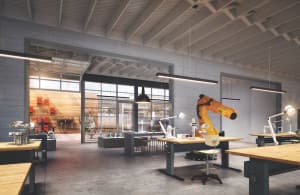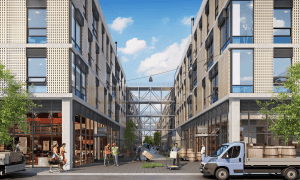The growth of maker spaces in San Francisco finally reverses course.
Yes, high rents are driving creative residents out of San Francisco, and the city is at risk of losing the eclectic quality that makes it unique. But there are some promising efforts underway to help San Francisco hold on to its artistic, crafty and innovative origins.
After 15 years of decline, manufacturing industry jobs have started to increase again. The maker movement, which spawned the first-ever Maker Faire in San Francisco in 2006 and continues to grow in popularity across the Bay Area, has helped inspire the city’s interest in workspaces that are conducive to independent innovation where makers can come together to design, collaborate and create new things.
In 2008, San Francisco created a plan to protect existing production, distribution and repair (PDR) spaces from being converted to high-rent dwellings such as residential and commercial office space in the city’s Eastern Neighborhoods. Taking things a step further, San Francisco now incentivizes new industrial development by encouraging private developers to build affordable industrial space for the city’s growing inventor, crafter and tinkerer cultures.
For us designers, these spaces are fun to work on because they capture the spirit of the creative process and the process of making. They need to adapt to the needs of creative people and are by definition more raw and straightforward. PDR developments in San Francisco can make manufacturing a vital part of an active neighborhood, creating opportunities for connection between the makers and artists and local shops, restaurants and customers in the form of local residents and office workers.

1400 16th Street, Robotics Room
Given the industrial history of the Eastern Neighborhoods that are impacted by PDR zoning, the maker-centric projects we’ve worked on span from large-scale remodels to new construction. Opening to new tenants this fall in Potrero Hill, the former headquarters for clothing designer Jessica McClintock on Showplace Square at 1400 16th St. is being re-adapted to a full block—over 100,000 square feet—of manufacturing space and offices. The first floor will be dedicated for PDR use with the second floor remaining as office space. In addition to a seismic update and all new building systems, we are carving out a central light-filled space called “The Commons” with an operable greenhouse roof to bring in natural light and adding provisions for a roof deck with panoramic views. The 1938 Art Deco-style building exterior opens into a modern industrial interior with reclaimed wood paneled walls and exposed beams and columns.
Pfau Long, SFMade and Kilroy Realty Corp. are also collaborating on a new PDR project to replace an existing shipping container mini-storage facility with a new 427,255-square-foot manufacturing and office space made up of three, four-story buildings at Hundred Hooper, located at 100 Hooper St. in the city’s Potrero Hill neighborhood.

Hundred Hooper
One building will be dedicated to manufacturing and operated by PlaceMade, SFMade’s sister nonprofit subsidiary that is focused on partnering with the city and developers to create industrial space. The other two buildings will feature an entire ecosystem of ground-floor manufacturing spaces of different sizes for local makers such as digital fabricators, clothing designers and culinary arts. Above the plaza corridors between buildings, skybridges will connect the creative office and institutional spaces of the buildings’ upper floors.
The surrounding community and businesses will both contribute to and benefit from the manufacturing/creative campus. The nearby University of California, San Francisco campus and adjacent California College of the Arts will add to the synergy of creativity and innovation. The visibility of the ground-floor maker studios combined with chance encounters create opportunities for the area’s students, makers, shops and small businesses to connect and explore new ideas together.
San Francisco’s Eastern Neighborhoods have evolved from their manufacturing roots into mixed-use communities that can still be afforded by artists and tinkerers but are increasingly at risk of rent increases. We are optimistic that these PDR spaces can help San Francisco keep the types of creative thinkers that earned the city its unique reputation generations ago.
This article originally appeared in The Q, the Registry's print publication, in October 2015 and was recently published on the Registry's website.
